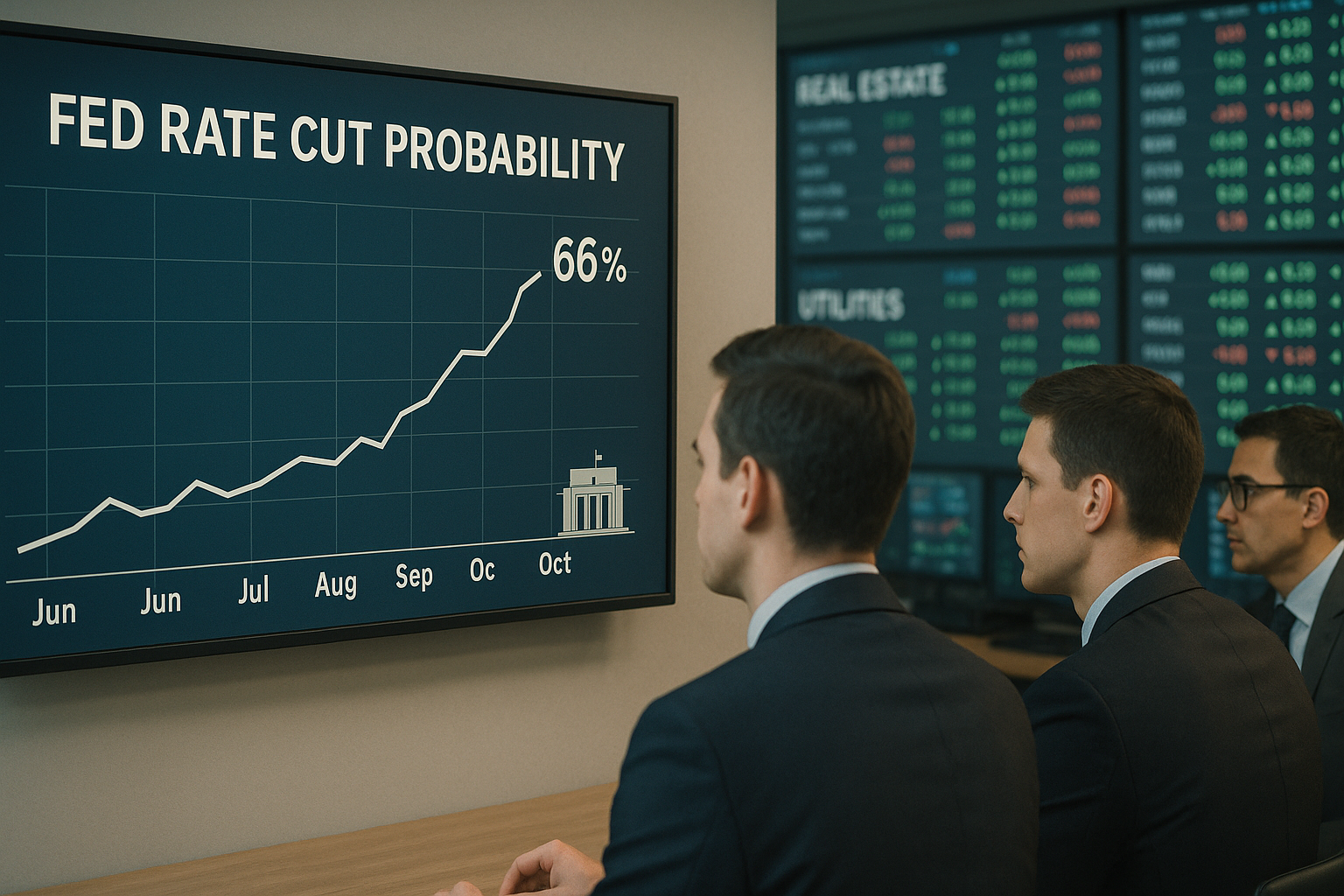The Fed might finally be ready to cut rates - and markets are taking notice. According to the CME FedWatch Tool, there's now a 66% chance we'll see a rate cut in October, which has investors scrambling to position themselves accordingly.
I've been through enough Fed cycles to know that these probability estimates can shift quickly, but this is the strongest signal we've seen in months that the central bank is preparing to ease monetary policy. After nearly two years of tight money, the economic landscape seems to be shifting.
What does this mean for your portfolio? Well, it depends. Rate-sensitive sectors like real estate and utilities typically benefit from lower rates, while banks might see their net interest margins compressed. I've already noticed some rotation into these sectors as smart money positions ahead of potential cuts.
"A Fed rate cut would represent a major pivot in monetary policy," explains economist David Tran. "The ripple effects would be felt globally, potentially weakening the dollar and giving emerging markets some breathing room."
The timing is particularly interesting to me. With inflation data showing signs of cooling but still above the Fed's 2% target, policymakers are walking a tightrope. Cut too soon, and they risk reigniting inflationary pressures. Wait too long, and they could unnecessarily constrain economic growth.
I think what's happening here is a classic case of the Fed trying to engineer a "soft landing" - slowing the economy enough to tame inflation without triggering a recession. The history of such attempts isn't particularly encouraging (they usually end up with either too much inflation or a recession), but maybe this time really is different? (I wouldn't bet my retirement on it, though.)
For investors, the key is staying flexible. If you've been heavily positioned for a high-rate environment, it might be time to reconsider some of those allocations. But don't go all-in on a rate cut scenario either - the Fed has surprised us before, and they could certainly do so again.
The next few months will be crucial as we watch incoming economic data and parse every word from Fed officials. In my experience, these policy transitions often create both opportunities and pitfalls for investors who aren't paying close attention.




